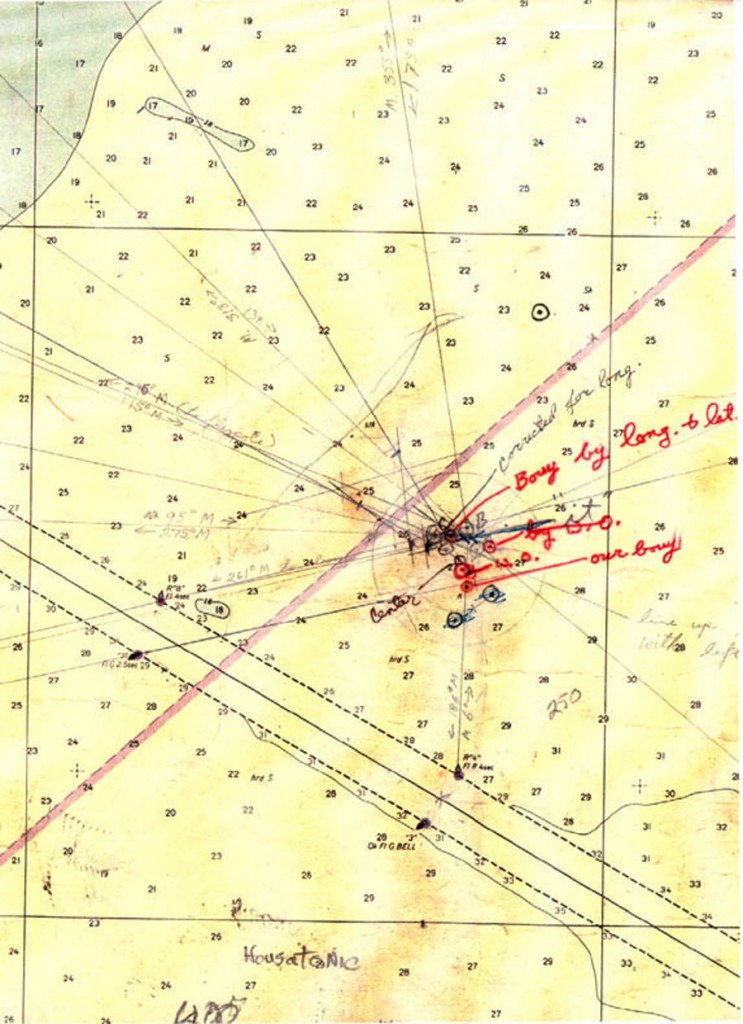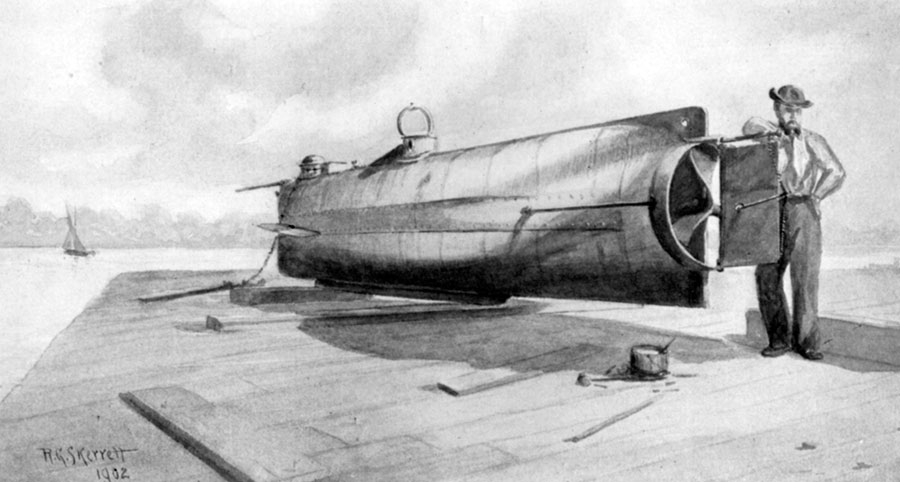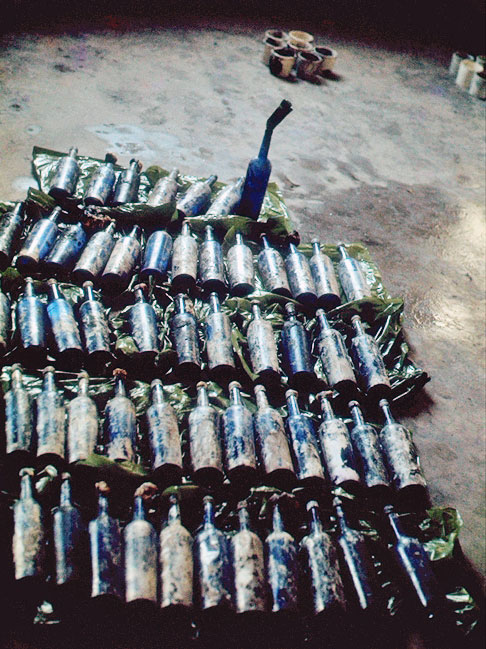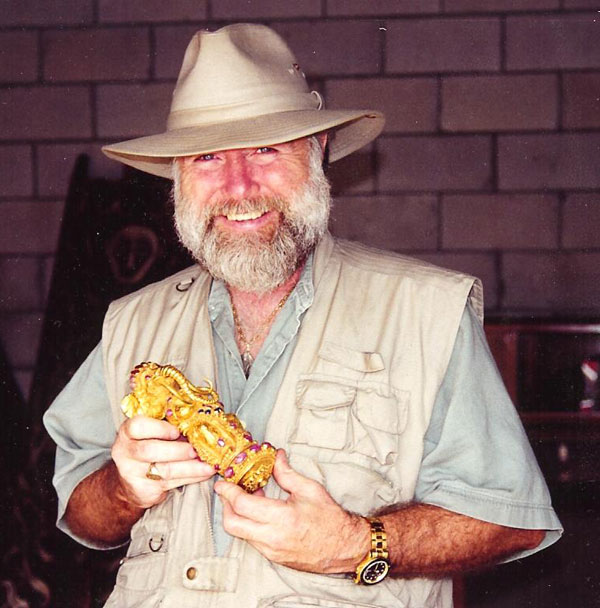No stranger to controversy, Dr. Lee Spence is an internationally known expert on shipwrecks and sunken treasures. He is one of five people in the world with a Doctor of Marine Histories (College of Marine Arts, 1972) and he has long been considered one of the founding fathers of marine archaeology.
Story and Interview by Michael Bear, California Diver Magazine. Photos provided by Dr. Spence.
His work has been funded by such institutions as the Savannah Ships of the Sea Museum, CRIL (the Caribbean Research Institute Ltd., Colombia, South America), the College of Charleston, the South Carolina Committee for the Humanities, and the National Endowment for the Humanities.
Imbued with a taste for adventurer, Spence has traveled to a wide range of exotic places in the Far East, Europe, Central and South America. He has explored castles, palaces, shipwrecks, ancient ruins, secret tunnels, and subterranean and underwater caves. He has dived in the Great Lakes, the Atlantic, the Pacific, the Mediterranean, and the Caribbean.
Dr. Spence has discovered numerous historically significant shipwrecks, including the Civil War blockade runner Georgiana and the Confederate submarine Hunley. He considers his identification of Charleston born banking and shipping magnate George Trenholm as the “Real Rhett Butler” to have been his most interesting non-shipwreck discovery.
The H. L. Hunley was a submarine of the Confederate States of America that played a small part in the American Civil War. Hunley demonstrated the advantages and the dangers of undersea warfare. She was the first combat submarine to sink a warship, although Hunley was not completely submerged and, following her successful attack, was lost along with her crew before she could return to her base. The Confederacy lost 21 crewmen in three sinkings of Hunley during her short career. The submarine was named for her inventor, Horace Lawson Hunley, shortly after she was taken into service under the control of the Confederate Army at Charleston, South Carolina.
The State of South Carolina’s claim of ownership to the Civil War submarine Hunley was based on Spence’s 1970 discovery of that vessel and his subsequent gift of his salvage rights to it to the State. Spence’s gift of his rights was made in September of 1995 at the official request of the Attorney General of South Carolina and the South Carolina Hunley Commission.
In 2013, Dr. Spence announced the positive identification of two his discoveries at Cape Romain — the 1894 wreck of the SS Ozama and the 1881 wreck of the SS United States. He hopes that in 2014 he will be able to identify a third steamer and a number of sailing vessels that he has already discovered in the same area. He already has the legal ownership of all of these wrecks due to an Admiralty claim he filed in United States District Court in 2012.
Note: above information used with permission of Dr. Spence for this article
****************************************************************
Q: The discovery of the Confederate submarine HL Hunley has been described by Dr. William Dudley, Director of Naval History at the Naval Historical Center as “probably the most important (underwater archaeological) find of the 20th century.” I am sure that over the years you must have grown a bit weary of answering this question, but for our readers who may not be familiar with the controversy, can you summarize in a nutshell how it is that you discovered the Hunley?
A: Technically, my discovery of the Hunley was serendipity in that I found the wreck only after it was snagged with a fish trap. But, as Luis Pasteur said: “…chance favors only the prepared...” Fortunately, I had spent years researching the Hunley so I was prepared and recognized it for what it was, even though only inches of it stuck above the sand.
Although I hadn’t planned to dive that day, the boat captain (Joe Porcelli) was a diver and had his scuba gear aboard. The only reason I wanted to check out the snag was because I thought it might be the Hunley’s victim, the USS Housatonic. Like other historians, I had incorrectly thought the Hunley was lost well inshore of this location. Although I couldn’t fit into Joe’s wetsuit or fins and the waters were bone chilling cold, I made the dive anyway. I dove in my underwear because my love of history and exploration far outweighed the discomfort and added danger I knew I would face.
When I got to the bottom, I saw the trap resting against what appeared to be a small ledge running along the bottom. As I examined the “ledge,” I realized it was not natural but was manmade and it definitely wasn’t the Housatonic. There was very little exposed and I stared at it trying to figure out what it might be. Suddenly everything made sense as I realized I was looking at the very top of the Hunley’s hull.
I was so excited that I went rocketing to the surface, screaming to the fish that I had found the Hunley.
Even before drying off and getting back into my clothes, I took compass bearings on the Morris Island and Sullivan’s Island lighthouses so I could later return to the wreck. Had I not done so, I may never have found it again, because it had reburied by the time I went back and I was only able to relocate it with a magnetometer.

NOAA chart 11521 annotated by Dr. Spence. Note the word “It” with an arrow pointing to an “X” marking the Hunley’s correct location. © 1979 by Dr. E. Lee Spence. (Click to see larger)
Q: What is the source of the controversy over who discovered the Hunley?
A: The controversy is whether I found the Hunley first or whether it was discovered by novelist Clive Cussler. Cussler writes adventure fiction centered around the research, exploits & discoveries of a fictional marine archaeologist and uses the publicity from his own alleged shipwreck discoveries to get free publicity that he uses in marketing his books. Correctly promoted, a discovery as important as the Hunley would mean millions of dollars worth of free publicity. Unfortunately, despite the fact that others, using my information, had dived on her and verified my discovery, Cussler and some others didn’t think I had found the Hunley. They probably thought that because she was reburied in the constantly shifting sands within weeks of my discovery before I could get pictures, and my published location didn’t match the theories advanced by various historians and archaeologists as to where they thought she ought to be found. She certainly wasn’t where Cussler’s experts thought she would be. But, when she was found in 27 feet of water where I had reported her, instead of telling the truth Cussler “lied” (his word, not mine) and claimed she was at a totally different location in just 18 feet of water.
——————————————————————————————————————————–
Related stories:
Anacapa’s WWII Bomber: Diving the Wreck of the Avenger
Diving the UB88 Submarine: California’s WWI Submarine
The Infadel – Advanced Diving at Catalina
——————————————————————————————————————————–
Because they had dug up and taken video of the wreck, there was no question that they had been on her. So Cussler’s claim was believed. I had followed the law and proper archaeological protocol and not dug her up and thus had no photographic evidence. Even if I had taken pictures before she reburied there was so little exposed that they wouldn’t have looked like much. My real, incontrovertible proof was my mapped location, but until the Hunley’s GPS coordinates were released after she was raised I couldn’t prove she was really at my spot. On the standard map of the area, the center of the “X” on my map (published well before Cussler’s “discovery”) and the official GPS position were less than twenty-one thousandths of an inch apart. That was within the length of the salvage barge used to raise her. But, by the time I could prove that, thousands of articles had been published around the world crediting Cussler with the discovery.
You can’t un-ring a bell, and there are still lots of people believing and repeating the story that Cussler discovered the Hunley. Fortunately, through the power of social media the truth about my discovery is getting out there. Incidentally, Cussler has made discovery claims to other wrecks that had already been found, and has claimed credit for a couple of discoveries that simply aren’t supported by the evidence. However, he still gets lots of free publicity, and publicity is obviously valuable to him. You can read more about the controversy over the Hunley discovery at http://shipwrecks.com/hunley_discovery/.

1902 sketch by R.G. Skerrett of the Confederate States submarine torpedo boat H.L. Hunley, From the private archives of Dr. E. Lee Spence.
Q: The Hunley was sunk not once, but twice, with the loss of all hands on board, including the original builder, Horace Hunley himself, before its final sinking in February of 1864. Why was the Confederacy so determined to use this submarine that they would deploy it right after two prior sinkings like that–any idea?
A: I agree it took guts, but it wasn’t insanity. Each time the Confederates thought they had worked out the problems with the Hunley, and as history has recorded, they were actually correct in that it was a workable idea. After all, they were able to pilot it over three and a half miles offshore and attack and sink a United States warship.
Q: Also, the remains of the crew were all found at their respective stations inside the sub, instead of near the escape hatch, as is common in these type of sinkings–do you want to speculate on the reason for that?
A: The Hunley is of extremely small diameter and she had a crankshaft that ran down her center. Unless properly position, that crankshaft would have effectively restricted the men to their assigned positions. And, without the crank being in exactly the right position, it would have been virtually impossible for her men to make a mad rush for the exit. If she flooded from a tear in her hull, or from an improperly closed hatch, which is what I believe, I suspect they drowned before the inrushing waters slowed enough to allow them to even try escaping.

Letter from S.C. Attorney General thanking Dr. Spence for donation to the State of his rights to the Hunley. From the private archives of Dr. Spence. (Click to see larger)
Q: You are also credited with finding the SS Georgiana, the most powerful cruiser owned by the Confederate Navy. How did that come about?
A: When I was in grade school I read about the Georgiana in a book of compiled government documents that was published after the Civil War. I dreamed of finding her and salvaging her cargo. With the help of my school’s librarian, I started researching her. I read countless reels of microfilmed newspapers looking for anything I could find relating to her. I searched consular dispatches, navy records, etc. As I did so, I learned about thousands of other shipwrecks and research became my passion. I still refer to research as my drug of choice, as it allows me to escape into a world of adventure. By the time I found the shipwreck, I had enough information that I could have written a book on her. We salvaged over a million individual artifacts from the Georgiana. The artifacts ranged from extremely rare cannons to beautiful Wedgwood china and tiny brass sewing pins. You can read more about the Georgiana at http://shipwrecks.com/discovery-of-the-georgiana/.
Q: And most recently in 2013, the SS Ozama, which experience an on-board mutiny in 1886. Can you tell us a little bit about how about how that discovery came about?
A: Like many of my discoveries, I found the Ozama while searching for another, much earlier wreck. I actually found her in 1979 and ignored her for decades because I thought she was much more modern than she is. It was only last year (2013), after I came across a newspaper account telling of the loss of the Ozama that I realized exactly what I had found. An iron hulled steamer, she was built in 1881 and sunk in 1894. Besides the mutiny mentioned above, she had been involved in gun-running and in carrying extremely large amounts of money. Upon learning this, I immediately went back to the wreck and confirmed her identity. You can read more about the Ozama athttp://shipwrecks.com/ss-ozama/.
Q: How did your interest in sunken wrecks begin?
A: When I was in second grade my father gave me two books, “Robinson Crusoe” and “Swiss Family Robinson.” Both told tales of shipwreck survival and the salvage of part of the cargos of the ships. After reading those books, I read “Treasure Island” and after that I was hooked for life. I wanted to find shipwrecks and Spanish treasure. I not only wanted to find gold and silver, I dreamed of recovering and drinking wine from the wrecks and eating off the crew’s dinner plates (just as they had done in the books). I have since done all of those things.

These cobalt blue bottles of castor oil were the contents of one barrel found on the Georgiana. © 1972 by Dr. E. Lee Spence.
Q: What advice do you have for someone, a diver say, who believes they have stumbled across historical wreck? What is the first thing they should do?
A: Call me! No, all kidding aside, they need to get advice from an expert on shipwrecks. But, they shouldn’t get it from anyone working with a university or a government or they may find themselves completely cut out of their discovery. Until they have talked with an expert (or become one themselves), they really shouldn’t tell anyone who might become competition or who might let the word out. That includes family and friends, who probably wouldn’t realize how valuable such a discovery could be, even when there is nothing of monetary value on the wreck. Remember, getting credit for a discovery is something like winning a gold medal in the Olympics. Such medals can result in all sorts of opportunity.
Q: And taking that a little bit further, what advice do you have for kids who want to grow up discover sunken ships and pirate treasure? What type of education and training do you recommend?
A: I don’t believe it matters what a kid’s dreams are, what matters is that he or she understands that dreams only come true for those who study and work hard enough to make them come true.
Q: What are you working on now?
A: I always have a number of projects going at once. Each project is usually in a different stage. One project might be in the initial research phase, another in the search phase and still another in the salvage phase. One of my current projects involves the wreck of an extremely historic ship. I think I have found her, but I still have to prove it. Until I can, I am not ready to make an announcement. A couple of other projects involve major amounts of treasure. But, because it isn’t wise to talk about such projects until they are over, your readers will have to wait and wonder what wrecks I am after (or have found). Anyway, a better question is what are your readers working on? I hope they have some great targets and I wish them great luck. I hope people will LIKE my page on Facebook at https://www.facebook.com/shipwrecktreasure.
—————————————————————————————————————————-
Click here for more wreck diving stories:
Diving the USS Burns – Fletcher Class Destroyer
John Chatterton: Portrait of a Shadow Diver
—————————————————————————————————————————–

